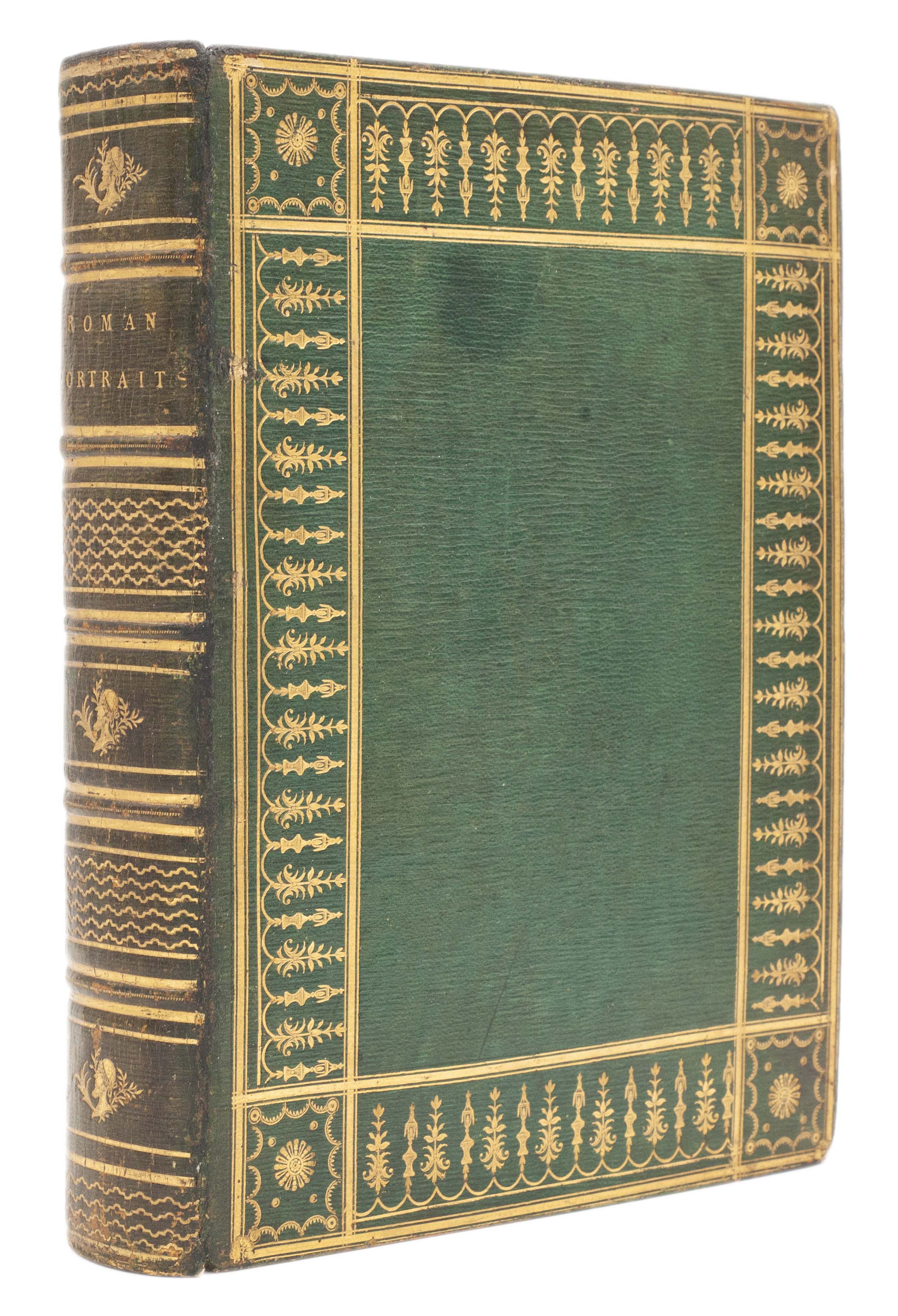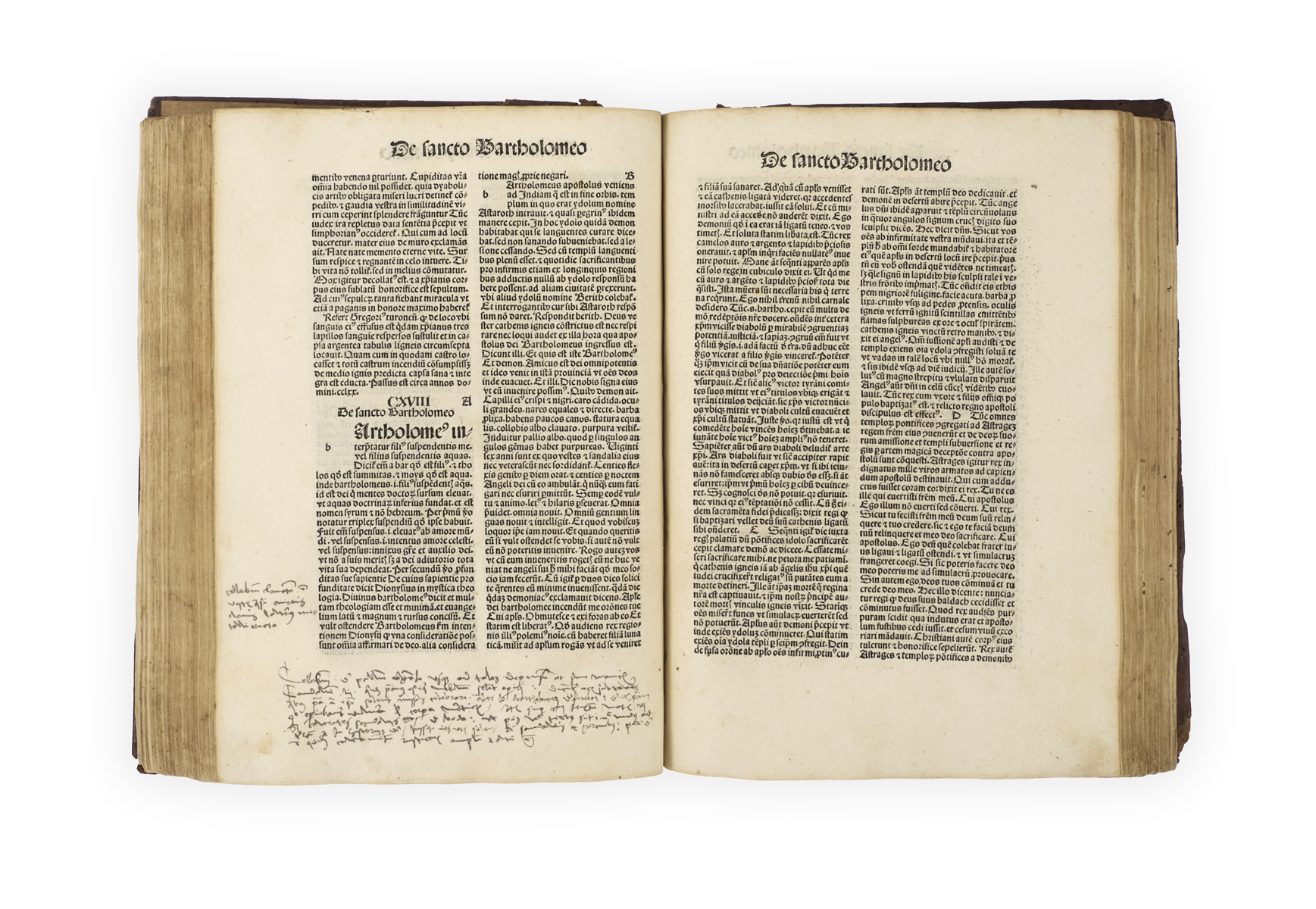
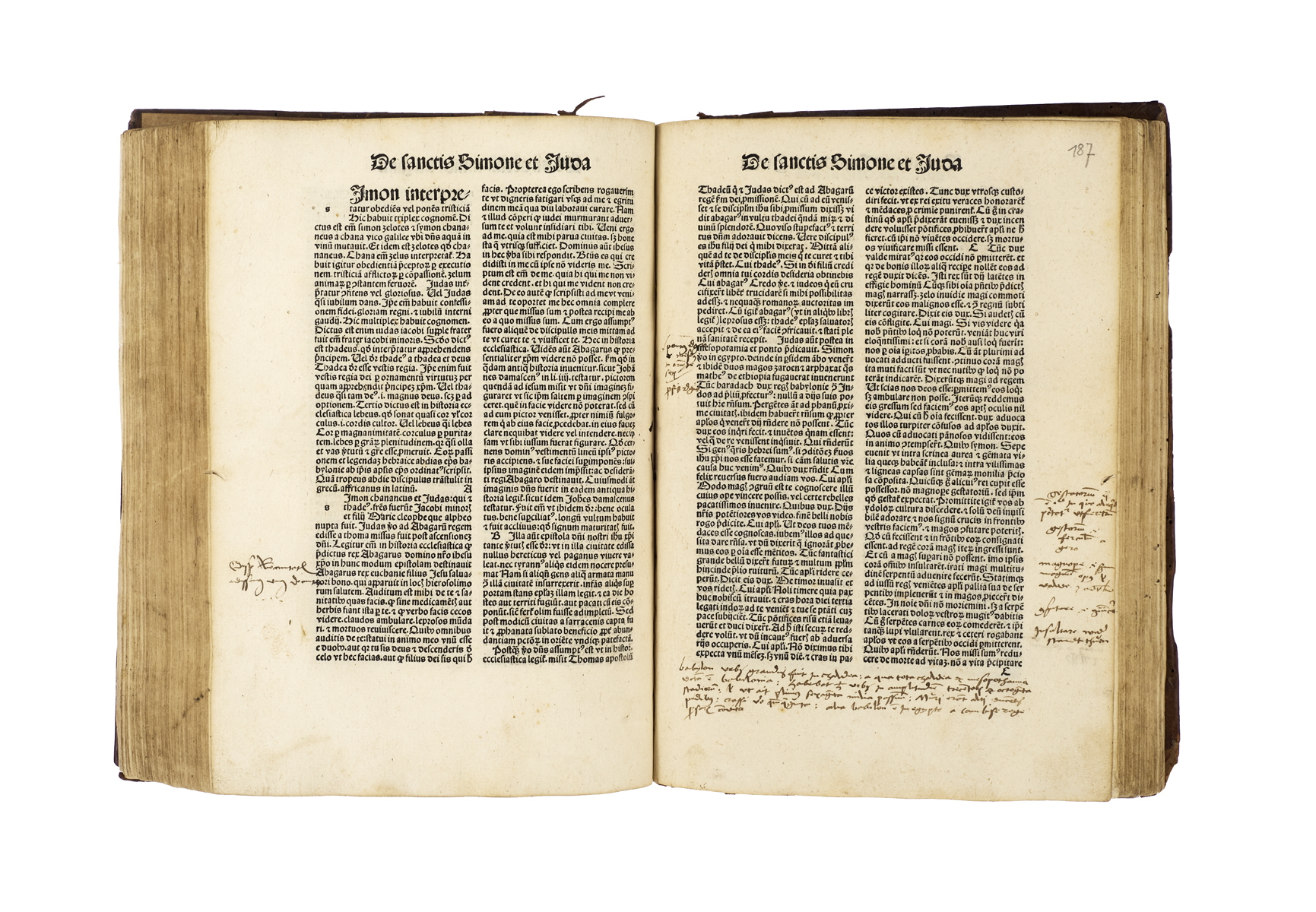
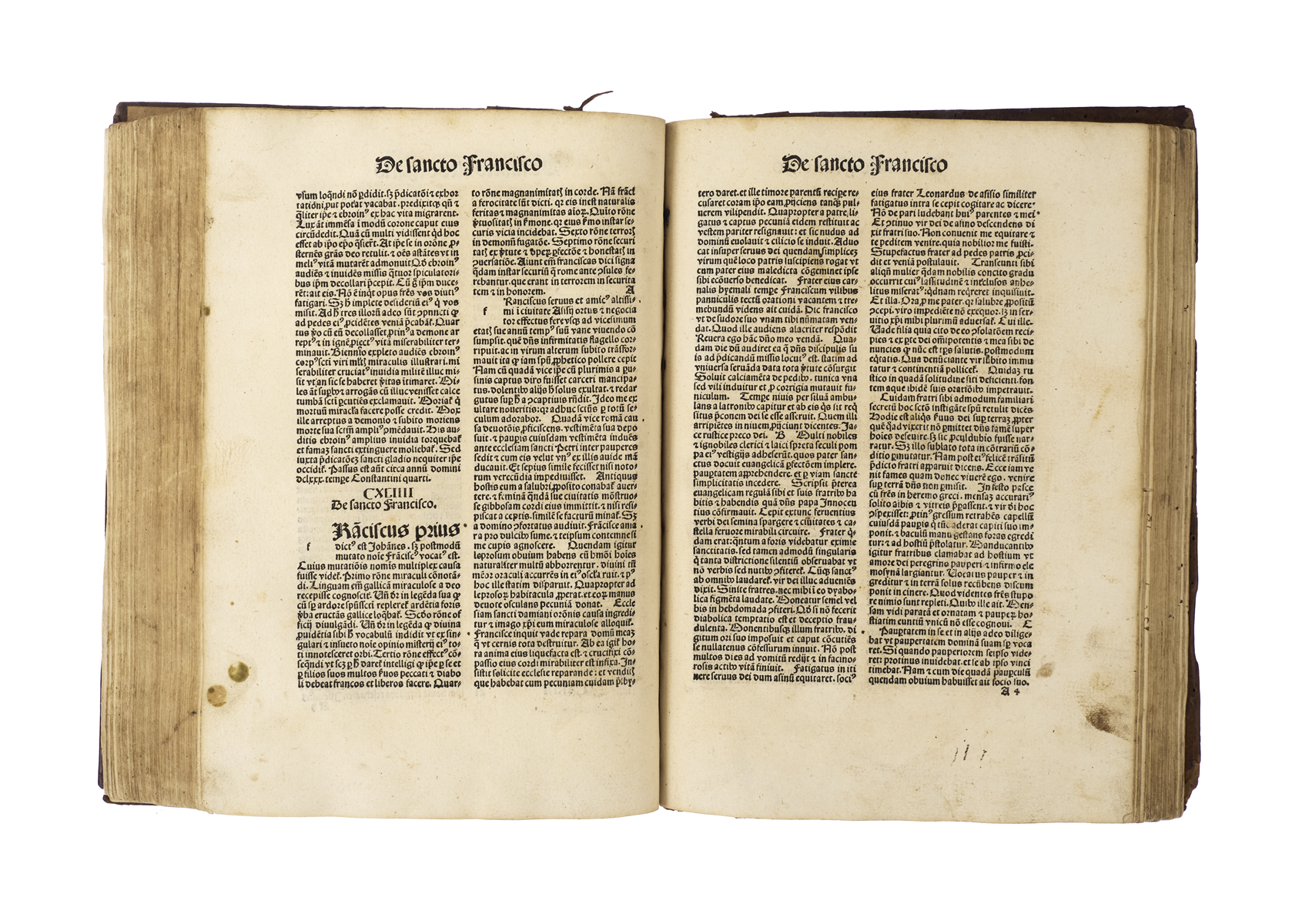
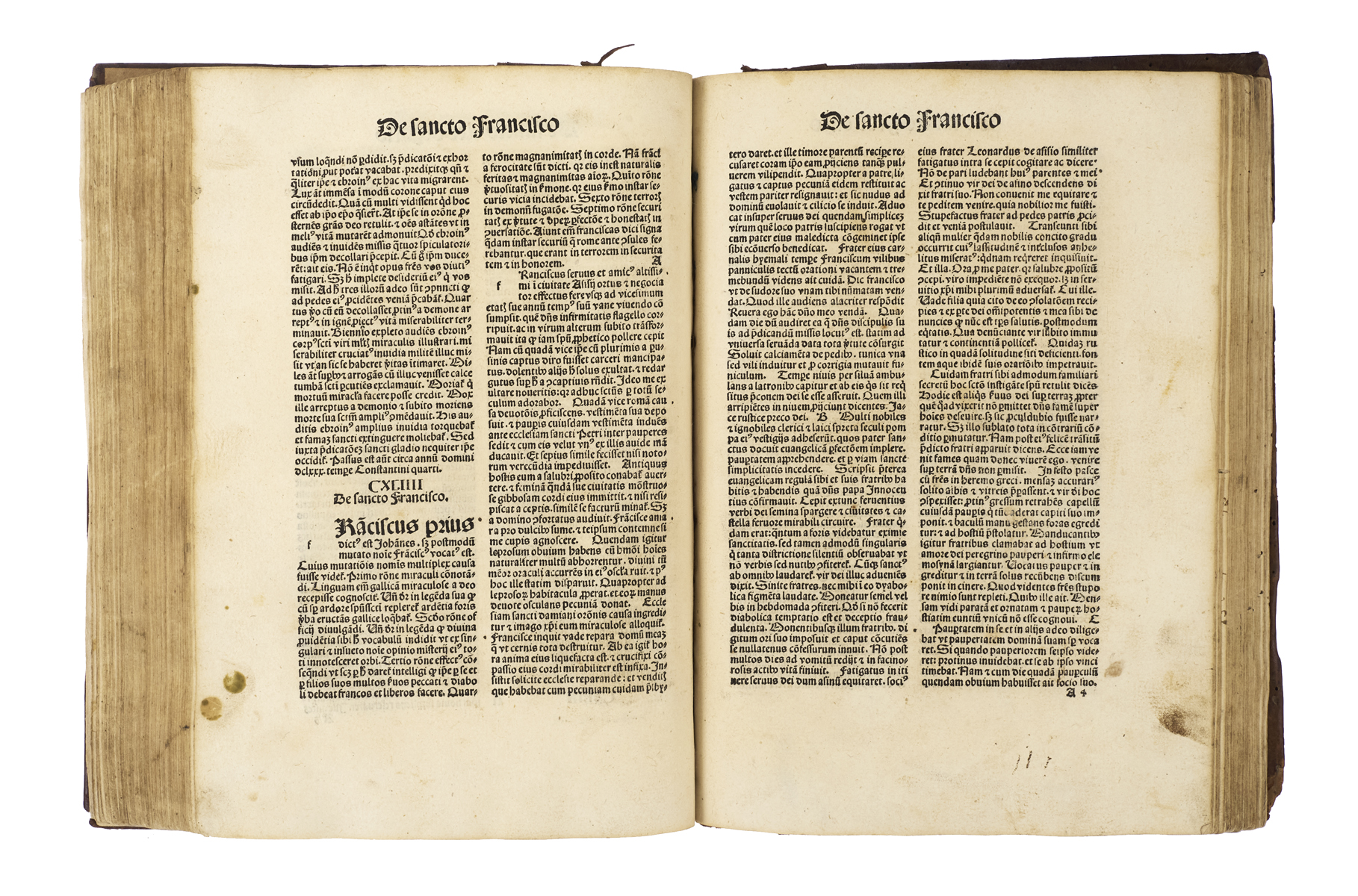
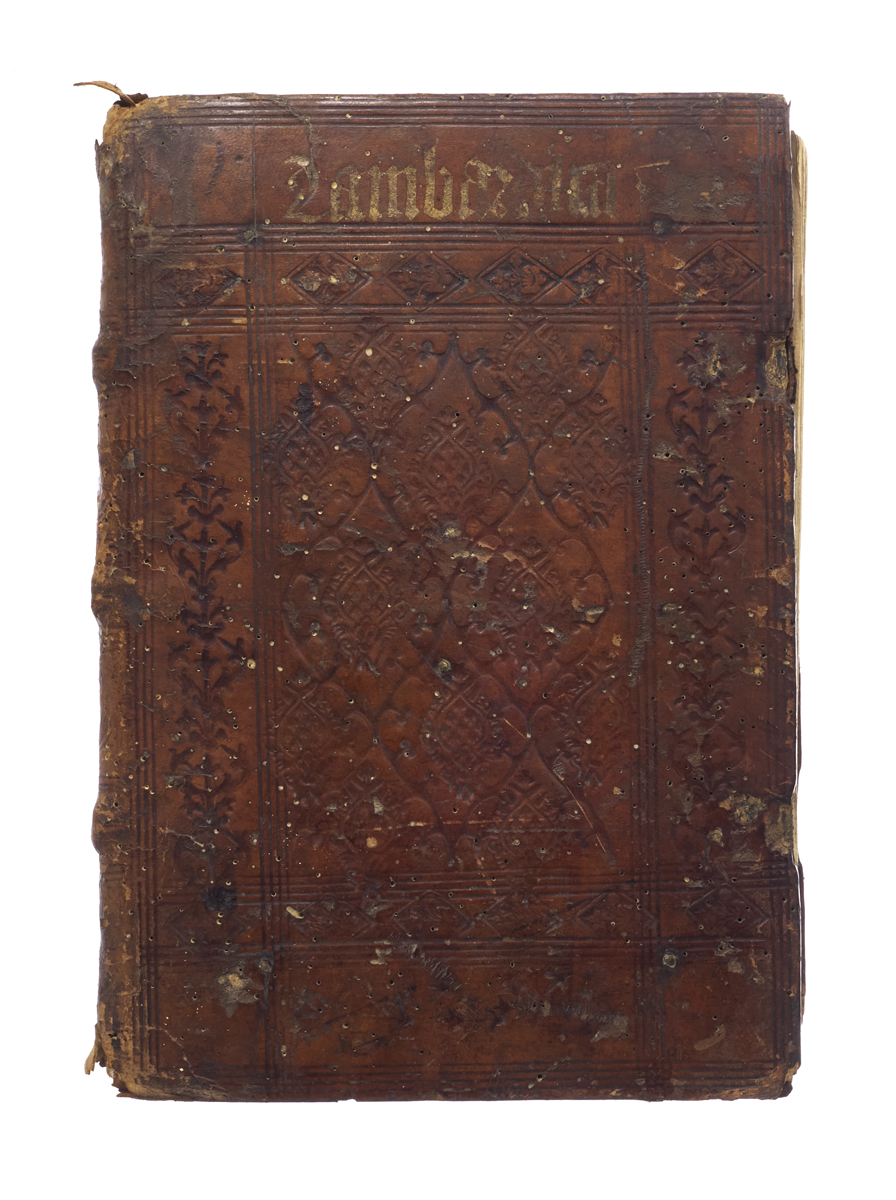


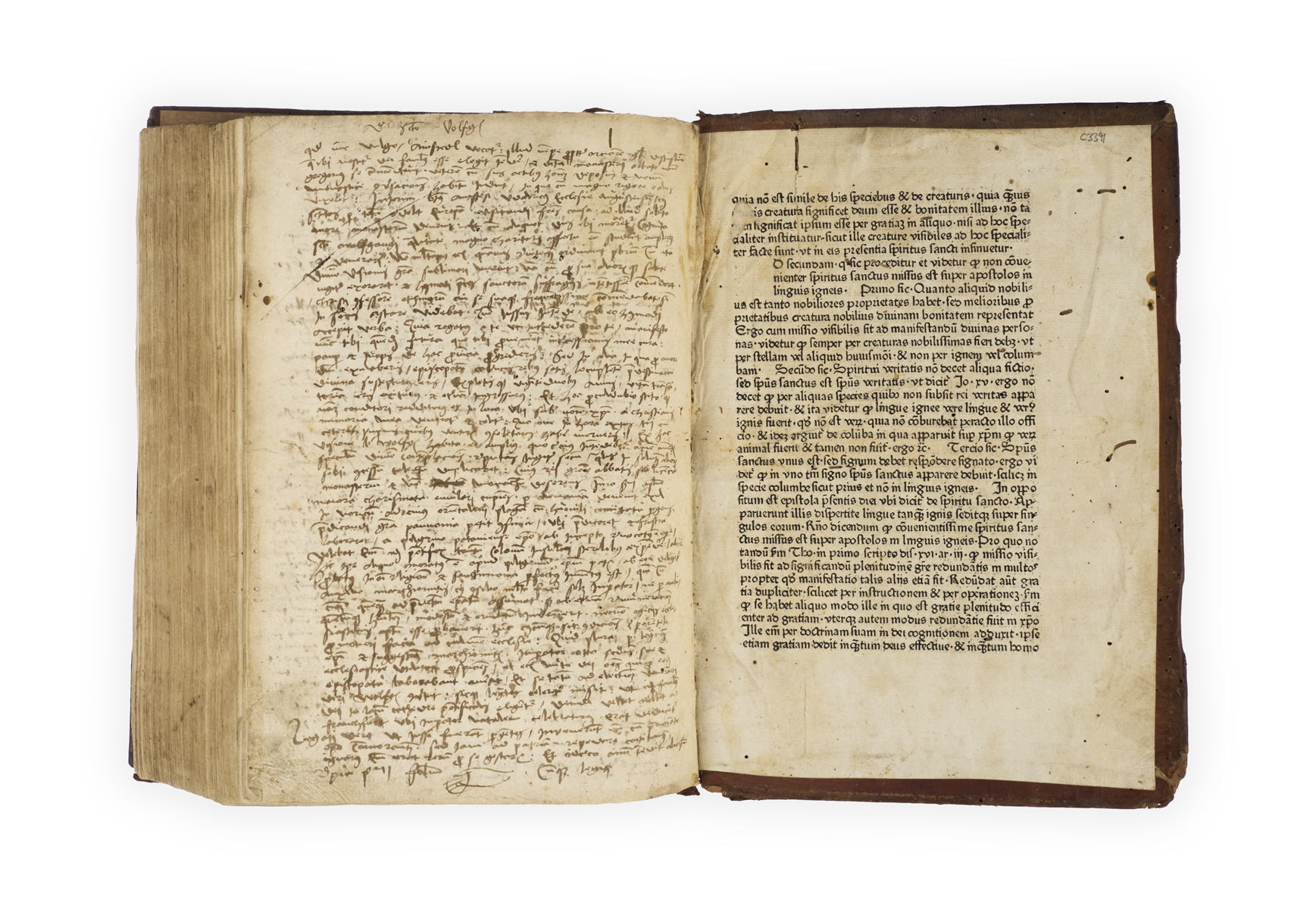
STRASBOURG, NUREMBERG, AND PANNONIA
VORAGINE, Jacobus de.
Lombardica historia que a plerisque aurea legenda sanctorum appellatur.
Strasbourg, [Georg Husner,] 1502.
Folio (290 x 210 mm), ff. 258 (all blanks present); gothic letter in double columns, spaces for initials with guide letters; some light browning, occasional staining, short wormtrack in outer blank margin of c. 23 leaves, single wormholes mainly towards beginning and end affecting the odd single letter, neat repairs to tears in D6 and D7 affecting two letters on each verso, small burn on p2 obscuring a two-letter word on the recto, but generally in good condition; scattered marginalia in various different hands throughout; contemporary (probably Nuremberg) blind-stamped calf over wooden boards, top compartment of upper cover stamped ‘Lambardica’ in gilt in large gothic letters, fragment from an incunable used as the rear pastedown (see below), front pastedown and free endpaper apparently renewed at an early date; some rubbing and wear, loss to head of spine, tears and loosening to tailcap, old worming to boards, lacking clasps.

Added to your basket:
Lombardica historia que a plerisque aurea legenda sanctorum appellatur.
Jacobus de Voragine’s influential Legenda Aurea in a contemporary gilt-lettered binding with an incunable fragment used as the rear pastedown. This copy is also notable for its extensive sixteenth century manuscript additions relating to Saint Wolfgang of Regensburg and former ownership by Christoph Pühler (c. 1500–1583), a mathematician, writer, and pupil of Peter Apian (1495–1552). Printed in Strasbourg but bound in Nuremberg, it found its way to a Hungarian mathematician who may have used it while in Siklos, Vienna, and/or Passau. The volume also appears to have been connected in some way with the monastery of St Florian in Austria.
This edition of the Legenda Aurea includes 215 legends, which a sixteenth-century hand has here supplemented with additional hagiographic material relating to Saint Wolfgang of Regensburg (covered in Legend CCVIII) – perhaps a saint of local and/or personal significance to the user. Some of the annotations, along with an ownership inscription, indicate an interest in, and indeed connections with, Pannonia, a historical region that now includes western Hungary and parts of eastern Austria: the aforementioned hagiographic material refers to Saint Wolfgang’s Christian mission to Pannonia (sig. N8v, lines 28-29), while a marginal note on D3r flags ‘pannonia’ next to the portion of the text in which Saint Martin’s birth place is identified as Sabaria in Pannonia (now Szombathely, Hungary).
The Pannonian ownership inscription names the owner of the book as Christopher Collatinus, alias of Christoph Pühler (c. 1500–1583), born in Siklos, Hungary. Pühler was the author of Ein kurtze vnd grundliche anlaytung zu dem rechten verstand Geometriæ [A short and systematic introduction to the right understanding of geometry] which was printed in Dillingen in 1563 and which recent study suggests is a ‘pseudo-translation’ of Hugh of Saint Victor’s Practica geometriae (Morel, ‘Bringing Euclid into the mines: classical sources and vernacular knowledge in the development of subterranean geometry’, in Translating Early Modern Science (ed. Fransen et al., 2017), pp. 154-81, p. 162). In this work, Pühler claims to have been taught in Vienna by Peter Apian (1495–1552), the influential mathematician and astronomer perhaps best known for his visually impressive Astronomicum Caesareum. As Pühler is known to have spent time in Siklos, Vienna, and Passau, the present copy could theoretically have moved with him between any of these places.
The rear pastedown comes from a copy of the 1478 edition of Juan de Torquemada’s Quaestiones Evangeliorum de tempore et de sanctis printed by Friedrich Creussner of Nuremberg. The appearance of a Creussner fragment in a binding containing a Strasbourg imprint can be readily explained. The binding itself was almost certainly produced in Nuremberg, as there are striking similarities to stamps used by the ‘Madonna, Nuremberg’ workshop and likenesses to three other roughly contemporary Nuremberg workshops (see below). Given that Creussner himself worked in Nuremberg, it seems that our binder had access to waste material from a local printer.
Binding:
The decoration was almost certainly completed in Nuremberg, possibly by the ‘Madonna, Nuremberg’ workshop (active around 1473–1503). Four of the blind-tooled stamps used are nearly identical to ones used at the ‘Madonna, Nuremberg’ workshop (Einbanddatenbank workshop 500380w, stamps s014146, s028433, s031049, s014120); compare also the stamps used by three other roughly contemporary Nuremberg workshops (500205w, 501439s, 501448s). The British Library Database of Bookbindings provides another example of a book that was printed in Strasbourg and then bound in Nuremberg (IA1743A).
Provenance:
1. Handwritten additions of hagiographic material relating to Saint Wolfgang on sigs. 1-1r, 1-1v, 2-6r, N8r, and N8v, written in a sixteenth-century cursive script, 40-51 lines to the page, unruled. N8r, N8v, and 1-1r seem to contain a version of the beginning of Othlo’s life of St Wolfgang (Bibliotheca hagiographica Latina 8990); cf. Legenda Sancti Wolfgangi (Burgdorf, 1475) ff. 1r-5v (ISTC iw00068000). There is also material from a separate hagiography relating to Saint Wolfgang on sigs. 1-1v and 2-6r; cf. Acta sanctorvm Novembris II (ed. Carolo de Smedt et al, 1894), pp. 549-50. The same hand also appears to be responsible for some of the marginalia.
2. Christoph Pühler (c. 1500–1583), with his ownership inscription on N7v: ‘Iste liber est Christophori Collatinus Siclas opido pannoniorum inferiorum’.
3. There are later indications of monastic provenance, or at least a monastic connection. A note on F5r records the death of a canon regular named Francis Schwab in 1671: ‘Franciscus schwab can. Reg. ad s florianum professus duobus et medis Anno in monasterio sancti Nicolai hospes fuit Anno 1671 discessit 12 January deus benedicat’ (the text after ‘discessit’ is in a darker ink, and possibly another hand). St Florian was an Augustinian foundation in Upper Austria famed for its library. In the outer margin of the same leaf, in yet another hand, there is a series of majuscule letters (
This copy has the variant that includes a point after ‘appellatur’ on the title page (contrast Staatsbibliothek zu Berlin copy). USTC and OCLC record five copies in the US (Bryn Mawr, Columbia, Newberry, Princeton, and Stanford).
USTC 673583, VD16 J 142. Not in Adams.
